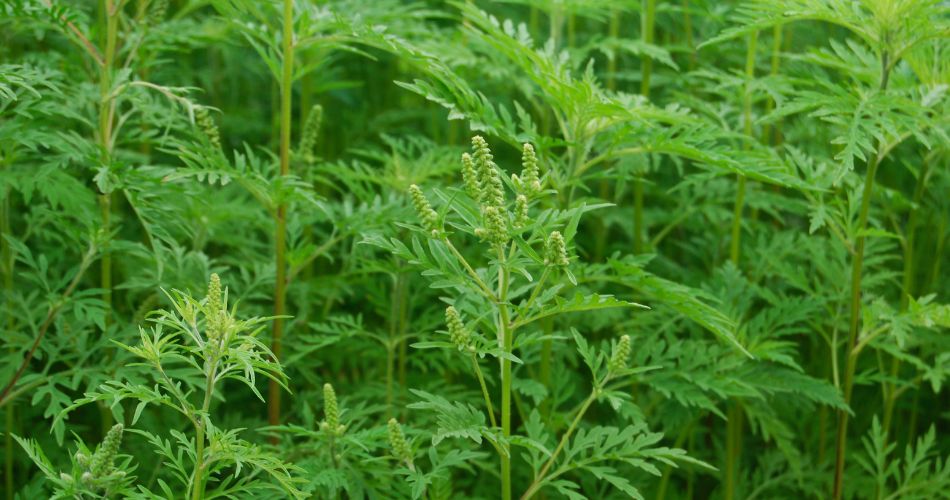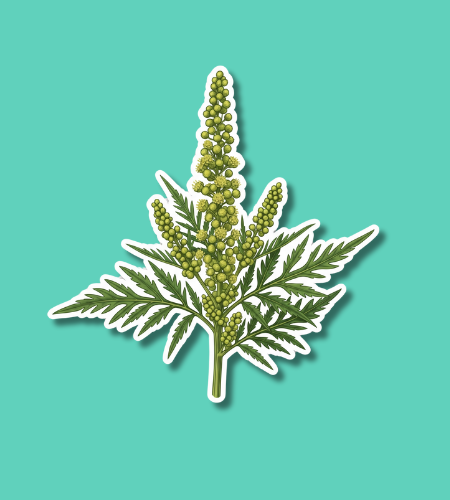International Ragweed Day, observed each year on the fourth Saturday in June, raises awareness about ragweed—a fast-spreading plant whose pollen causes widespread allergies.
History of International Ragweed Day
International Ragweed Day was first established in 2011 by the International Ragweed Society to highlight the growing impact of ragweed’s spread around the world. The day was intentionally set on the first Saturday of summer to encourage action before the ragweed plants bloom and release pollen. 1
Over the years, the observance has grown to include scientists, horticulturalists, public health experts, and concerned citizens across many countries. Through clean‑up campaigns, educational events, and community planting strategies, the day highlights how early detection and removal can reduce pollen impacts and help control this invasive plant.
Why is International Ragweed Day important?
It amazes me how a single weed can disrupt entire communities—causing allergies, affecting crop yields, and even impacting economies. This day really focuses that attention: it’s not about hating a plant, but about understanding how a simple act like pulling ragweed before it flowers can improve life for many.
It also fosters global cooperation. When health professionals, gardeners, and local volunteers unite, they share effective strategies—from mechanical removal to planting competitive native species. That sense of collective responsibility feels empowering and hopeful.
- It spotlights a tiny plant whose pollen affects millions each year.
- It encourages early, often local action to prevent huge pollen surges.
- It brings together scientists, gardeners, and health advocates—to learn from one another.
- It strengthens communities by organizing group clean‑ups and outreach.
- It promotes planting native species to naturally suppress ragweed.
Interesting facts about ragweed

- Just one ragweed plant can produce up to 1 billion pollen grains in a single season.
- Ragweed pollen can travel over 400 miles (over 600 km) by wind.
- About 1 in 5 people in the U.S. are allergic to ragweed, making it a leading cause of hay fever.
- Ragweed is invasive in Europe, where it causes billions in annual health and agricultural costs.
- The plant can remain dormant in soil for up to 40 years—meaning seeds can sprout decades after falling.
What are the signs of an allergy to ragweed?
Ragweed allergy, also known as hay fever caused by ragweed pollen, is one of the most common seasonal allergies. Symptoms typically appear in late summer to early fall and include:
- Sneezing, runny or stuffy nose
- Itchy or watery eyes
- Itchy throat or ears
- Sinus pressure or headaches
- Fatigue or trouble sleeping due to congestion
- In some people, asthma symptoms can worsen (e.g., wheezing, coughing, shortness of breath)
In people with severe sensitivity, ragweed pollen can even cause allergic conjunctivitis or eczema flare-ups.
What are the most effective ways to control ragweed?
Ragweed is a tough, fast-spreading weed, but there are proven methods to fight it—especially before it blooms:
- Early manual removal
Uprooting ragweed by hand (before flowering) is very effective and environmentally safe. Roots must be pulled out entirely to prevent regrowth. - Repeated mowing
Regular cutting of ragweed reduces its ability to flower and spread. Best done before mid-July when pollination begins. - Competitive planting
Planting native grasses and ground covers can outcompete ragweed and suppress its spread naturally. - Soil improvement
Ragweed thrives in poor, disturbed soil. Enriching soil with compost and avoiding over-tilling helps prevent its growth. - Community action
Coordinated local efforts (clean-up days, public awareness) are essential, since ragweed spreads rapidly via windborne seeds.
How to Observe International Ragweed Day
You don’t need fancy tools to make a difference. Gather a few friends or neighbors and walk your local parks, roadsides, or vacant lots. Pull up ragweed plants before they bloom. It’s simple, honest work—and feels good doing something visible to protect others from pollen bursts.
Another idea is to host a small workshop or info session: share photos of ragweed, explain its lifecycle, and show how to uproot it correctly. Pair it with planting a few native wildflowers so the area stays healthier in the long term. A tiny community flower patch can make a big visual statement.
- Walk, spot, and remove ragweed before it flowers.
- Invite neighbors for a morning community weeding session.
- Share plant ID guides on local social media groups.
- Host a casual info meet‑up in a park or garden.
- Plant native wildflowers to outcompete ragweed naturally.
International Ragweed Day Dates Table
| Year | Date | Day |
|---|---|---|
| 2025 | June 28 | Saturday |
| 2026 | June 27 | Saturday |
| 2027 | June 26 | Saturday |
| 2028 | June 24 | Saturday |
| 2029 | June 23 | Saturday |
Subscribe to our newsletter and never miss a holiday again!

